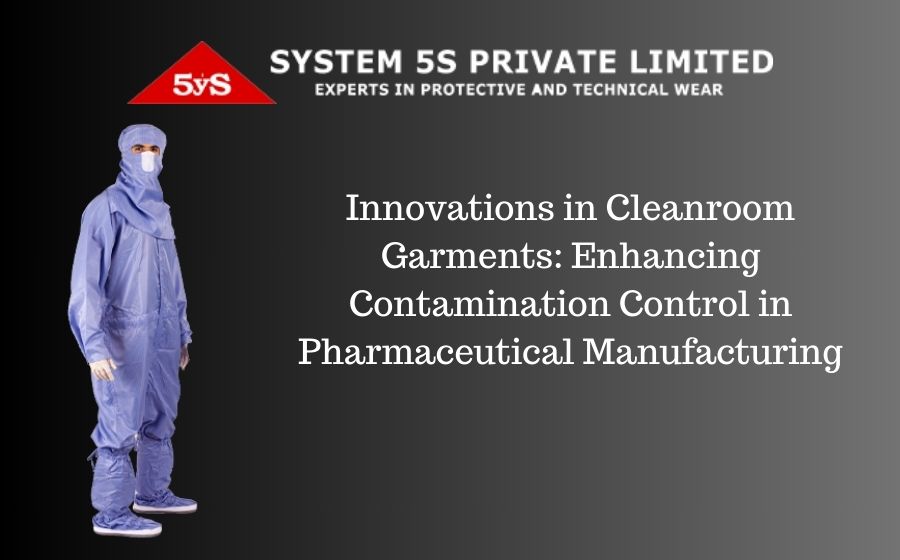
In the pharmaceutical manufacturing industry, maintaining a sterile environment is crucial to ensuring the safety and efficacy of products. Cleanroom garments play a vital role in controlling contamination and protecting both the product and the personnel. Recent advancements in cleanroom garment technology have significantly improved contamination control, offering enhanced protection and comfort. This blog explores the latest innovations in cleanroom garments, their impact on maintaining sterile environments, and insights on selecting the right garments to meet industry standards and regulations.
Latest Advancements in Cleanroom Garment Technology
Advanced Fabric Technologies
Modern cleanroom garments are made from high-tech fabrics designed to provide superior protection against particulate and microbial contamination. These fabrics are engineered to be non-linting, minimizing the risk of particles shedding from the garment. For instance, System 5S offers Non-Linting and Antistatic External Coveralls that combine non-linting polyester with antistatic properties, ensuring minimal particle shedding and enhanced static control.
Enhanced Comfort and Breathability
Comfort is a critical factor in ensuring compliance with cleanroom protocols. Innovations in fabric technology have led to the development of lightweight, breathable materials that allow for better air circulation while maintaining a high level of protection. System 5S’s Plain Non-Linting Garment is designed with comfort in mind, providing protection without compromising on wearability.
Antimicrobial Treatments
Some cleanroom garments now incorporate antimicrobial treatments that inhibit the growth of bacteria and other microorganisms on the fabric’s surface. This additional layer of protection helps reduce the risk of contamination from the garment itself, further ensuring a sterile environment.
Seamless Construction and Non-Linting Seams
The construction of cleanroom garments has also seen significant advancements. Seamless construction techniques and non-linting seams reduce the potential for particle entrapment and shedding. This ensures that the garment maintains its integrity and protective properties throughout its use. For example, the Non-Linting Polyester Latex Sole Antistatic Shoes from System 5S are designed to prevent particle shedding from seams and provide reliable antistatic protection.
Static Dissipative Properties
Static electricity can attract and hold particles, posing a contamination risk in cleanroom environments. Modern cleanroom garments are designed with static dissipative properties to prevent the buildup of static charges. This reduces the likelihood of particle attraction and helps maintain a clean and controlled environment. System 5S offers products like the Non-Linting and Antistatic Cap, which are specifically designed to manage static and minimize contamination.
Maintaining Sterile Environments in Pharmaceutical Manufacturing
Minimizing Contamination Risks
The primary function of cleanroom garments is to act as a barrier against contamination. Advanced fabrics and construction techniques ensure that particles, microbes, and other contaminants are effectively contained. This is critical in pharmaceutical manufacturing, where even the smallest contaminant can compromise product quality and safety.
Enhancing Personnel Protection
In addition to protecting the product, cleanroom garments also safeguard personnel from exposure to hazardous substances. By providing a reliable barrier, these garments reduce the risk of contamination and exposure, ensuring a safer working environment for employees.
Ensuring Compliance with Cleanroom Protocols
Comfortable and breathable garments encourage compliance with cleanroom protocols. When personnel are comfortable, they are more likely to follow proper gowning procedures and wear their protective gear for the required duration. This consistent adherence to protocols is essential for maintaining a sterile environment.
Selecting the Right Cleanroom Garments
Assessing Cleanroom Classifications
Different cleanroom environments have varying levels of cleanliness requirements, classified by the number of particles per cubic meter. It is crucial to select garments that are suitable for the specific cleanroom classification in which they will be used. For example, ISO Class 5 cleanrooms have stricter requirements than ISO Class 8 cleanrooms.
Compliance with Industry Standards
Cleanroom garments must comply with industry standards and regulations to ensure they provide the necessary level of protection. Key standard ISO 14644 for cleanroom environments should be observed . Manufacturers should verify that their garments meet the requirements of ASTM F 2101 and ASTM D257 test methods and provide documentation to support compliance.
Material and Construction
Choose cleanroom garments made from high-quality materials that offer both protection and comfort. Look for features such as non-linting fabrics, seamless construction, and static dissipative properties. These characteristics enhance the garment’s effectiveness in maintaining a sterile environment. System 5S’s Plain Non-Linting Hood and Non-Linting Polyester Storage Bag Antistatic are excellent examples of products designed to meet these requirements.
Garment Design and Fit
The design and fit of cleanroom garments are essential for ensuring they provide adequate coverage and do not impede movement. Properly fitted garments reduce the risk of contamination and improve comfort for the wearer. Adjustable features, such as elastic cuffs and waistbands, can help achieve a secure fit.
Maintenance and Sterilization
Regular maintenance and sterilization of cleanroom garments are necessary to maintain their protective properties. Ensure that the garments can withstand repeated sterilization processes without degrading. Follow manufacturer guidelines for cleaning and sterilization to extend the life of the garments.
Innovations in cleanroom garment technology have significantly enhanced contamination control in pharmaceutical manufacturing. Advanced fabrics, antimicrobial treatments, seamless construction, and static dissipative properties are just a few of the innovations that contribute to maintaining sterile environments. By selecting the right cleanroom garments that meet industry standards and fit the specific needs of their cleanroom classifications, pharmaceutical manufacturers can ensure the highest levels of protection for their products and personnel.
At System 5S, we are committed to providing cutting-edge cleanroom garments that meet the stringent requirements of the pharmaceutical industry. Our products, such as the Non-Linting and Antistatic External Coverall, Plain Non-Linting Garment, and Non-Linting Polyester Latex Sole Antistatic Shoes, are designed to offer superior protection, comfort, and durability, helping you maintain a clean and controlled environment. Trust System 5S for all your cleanroom garment needs and experience the difference that advanced technology can make in enhancing contamination control.